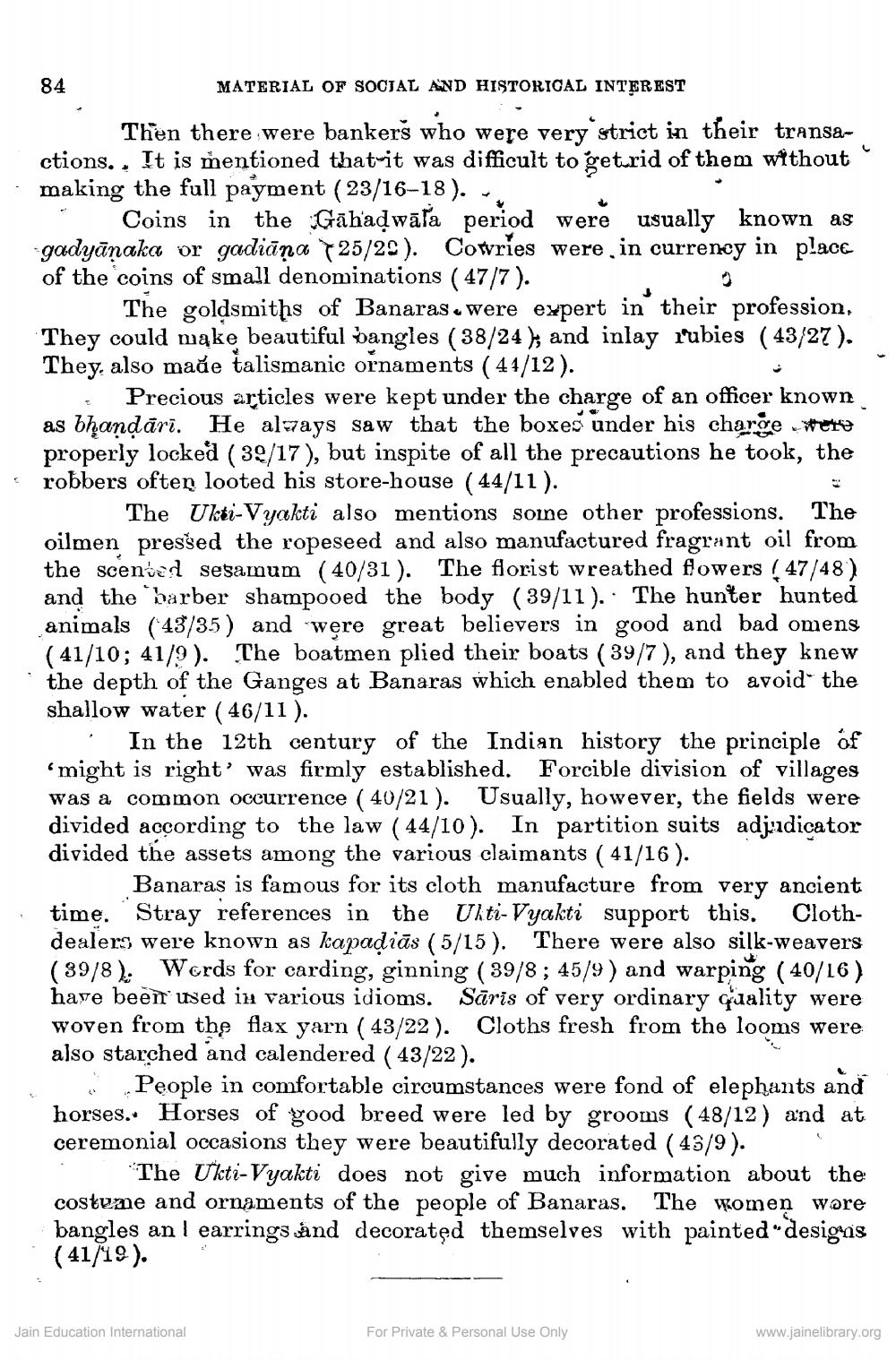________________
84
MATERIAL OF SOCJAL AND HISTORICAL INTEREST
Then there were bankers who were very strict in their transactions. . It is mentioned that it was difficult to get rid of them without making the full payment (23/16-18). -
Coins in the Gābaďwāľa period were usually known as gadyānaka or gadiāņa 725/20). Cowries were in currency in place of the coins of small denominations ( 47/7).
The goldsmiths of Banaras. were expert in their profession, They could make beautiful dangles (38/24 ); and inlay rubies (43/27). They also mađe talismanic ornaments ( 44/12).
• Precious articles were kept under the charge of an officer known as bhandārī. He always saw that the boxes under his charge were properly locked (30/17), but inspite of all the precautions he took, the robbers often looted his store-house ( 44/11).
The Ukti-Vyakti also mentions sone other professions. The oilmen pressed the ropeseed and also manufactured fragrant oil from the scented sesamum (40/31 ). The florist wreathed flowers ! 47/48) and the barber shampooed the body (39/11). · The hunter hunted animals (43/35) and were great believers in good and bad omens ( 41/10; 41/9). The boatmen plied their boats (39/7), and they knew the depth of the Ganges at Banaras which enabled them to avoid the shallow water ( 46/11 ).
- In the 12th century of the Indian history the principle of "might is right' was firmly established. Forcible division of villages was a common occurrence ( 40/21). Usually, however, the fields were divided according to the law ( 44/10). In partition suits adjudicator divided the assets among the various claimants ( 41/16).
Banaras is famous for its cloth manufacture from very ancient time. Stray references in the Ulti-Vyakti support this. Clothdealers were known as kapadiās (5/15). There were also silk-weavers (39/8): Words for carding, ginning ( 39/8 ; 45/9) and warping ( 40/16) have been used in various idioms. Sāris of very ordinary quality were woven from the flax yarn ( 43/22). Cloths fresh from the looms were also starched and calendered ( 43/22).
People in comfortable circumstances were fond of elephants and horses.. Horses of good breed were led by grooms (48/12) and at ceremonial occasions they were beautifully decorated ( 43/9).
The Ukti-Vyakti does not give much information about the costume and ornaments of the people of Banaras. The women wore bangles an I earrings and decorated themselves with painted"desiguais ( 41/19).
Jain Education International
For Private & Personal Use Only
www.jainelibrary.org




